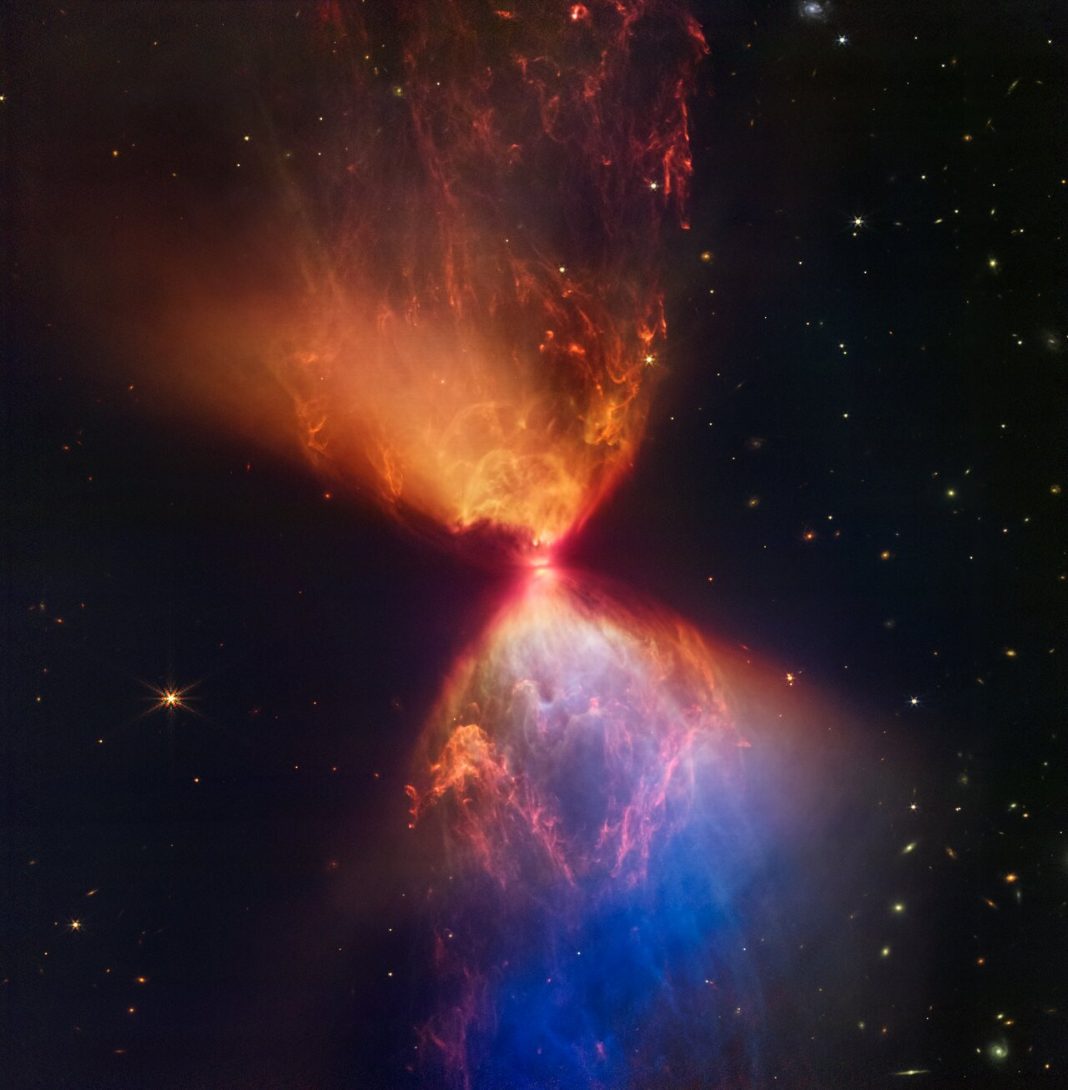Observing an ethereal cosmic hourglass courtesy of the James Webb Space Telescope has revealed the birth of a very young star or ‘protostar’
The protostar is hidden from view in the neck of the hourglass shape comprised of gas and dust. Researchers have revealed that the dark line across the middle of the neck is a protoplanetary disc the size of our solar system, with enough dense gas and dust to form a planet in the future. The light from this immense protostar spreads above and below the disk.
L1527 has far to go before becoming a full-fledged star. Being only 100,000 years old, the protostar is a relatively young celestial body compared with our sun, which is about 4.6 billion years old.
The vibrant colours of the cosmic hourglass
Blue and orange clouds are visible, outlining cavities created as material shoots away from the protostar and collides with surrounding matter.
According to the JSWT team, the nebula’s colours are only visible in infrared light (using the NIRCam). The blue areas are where dust appears at its thinnest, with the thicker layer creating pockets of orange where less blue light can escnuclape.
The reality behind the birth of a star
“Shocks and turbulence inhibit the formation of new stars, which would otherwise form throughout the cloud. As a result, the protostar dominates the space, taking much of the material for itself,” according to researchers.
The protostar doesn’t yet generate its own energy through the nuclear fusion of hydrogen, an essential characteristic of stars. The team from James Webb have revealed that as protostars continue to gather mass, their cores gradually compress and get closer to stable nuclear fusion. The scene shown in this image reveals that L1527 is doing just that.
The surrounding molecular cloud is made up of dense dust and gas that are being drawn towards the centre, where the protostar resides. As the material falls in, it spirals around the centre. This creates a dense disc of material, known as an accretion disc, which feeds material onto the protostar. As it gains more mass and compresses further, the temperature of its core will rise, eventually reaching the threshold for nuclear fusion to begin.
This newest image from the JWST provides context for what our sun and the solar system looked like in their infancy.











